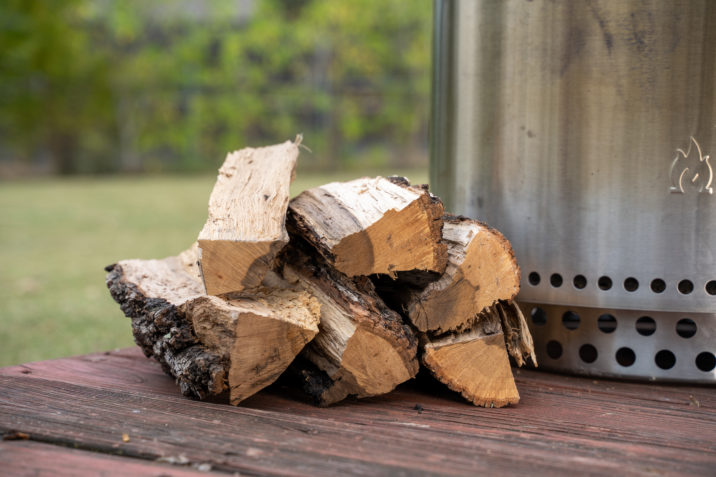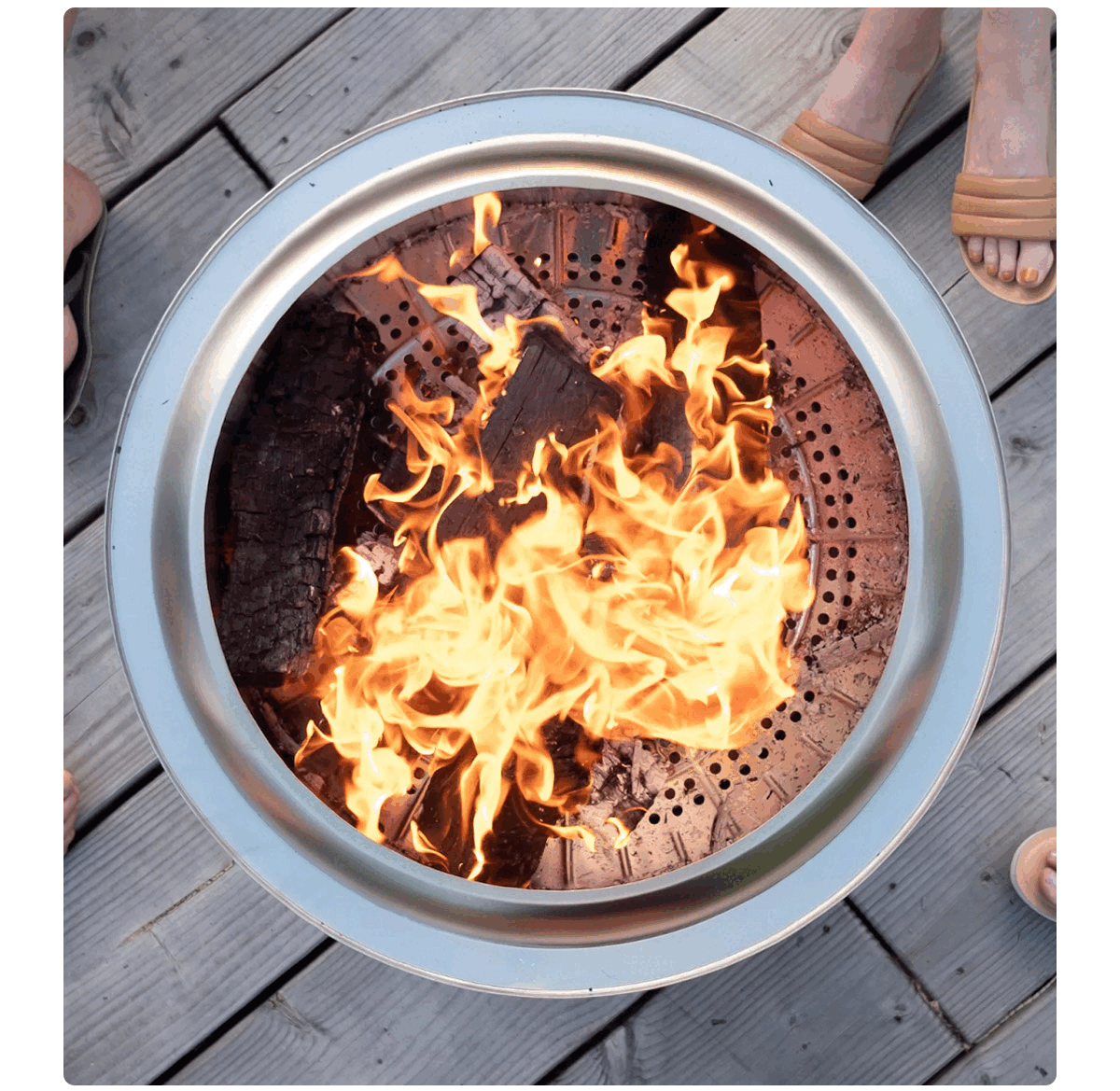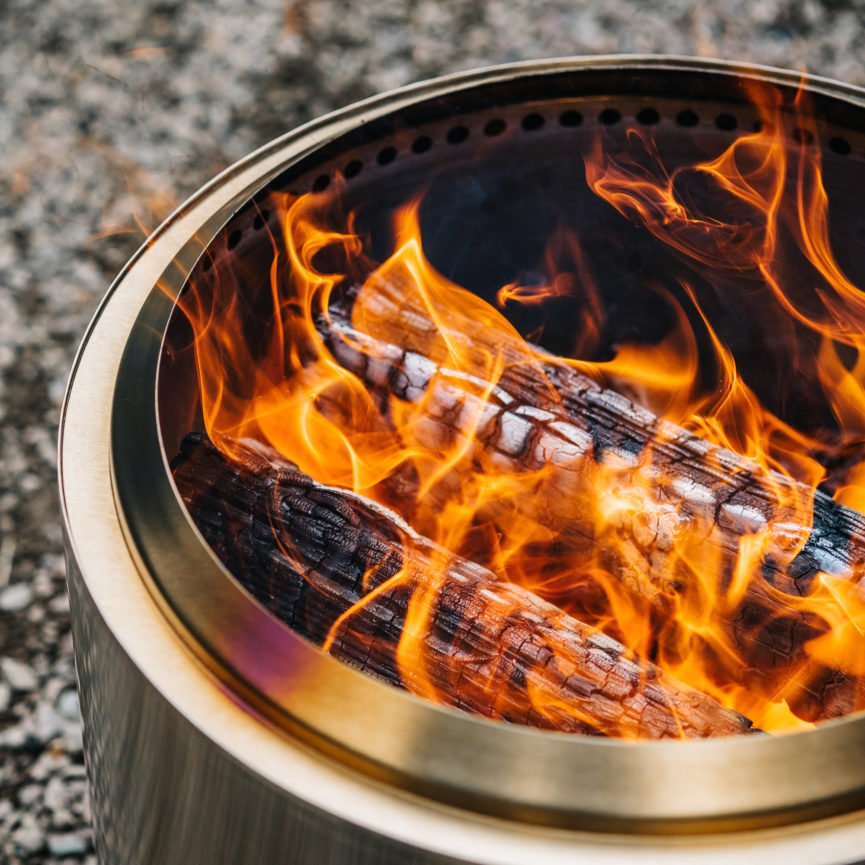By Carolyn Owen
Picture this: it’s a regular day at work, and you’re sitting at your desk. For some reason, that place always feels like the inside of a refrigerator. You’re about one degree from shivering, and then you have a bright idea that warms you right up: you have a night around your fire pit to look forward to.
There’s just nothing better than a roaring fire. And in this neck of the woods, the hotter the fire, the better. With cooler temperatures rolling in, you should know how to create the hottest fire possible so you can stay outside for even longer. Read on to see what we recommend!
Get To Know Your Firewood:
To get a hot fire going, your firewood needs to produce a high amount of BTUs. BTU stands for “British Thermal Unit” and is equal to the amount of energy used to raise one pound of water by one degree Fahrenheit. When you’re talking about firewood, this is the most common way to measure heat output. The best way to ensure a hot fire is by using hardwoods. Hardwoods produce higher BTUs than softwoods and burn longer.

Here are some of the hottest hardwoods per cord around:
- Osage Orange – 32.9 BTUs
- Shagbark Hickory – 27.7 BTUs
- Eastern Hornbeam – 27.1 BTUs
- Black Birch – 26.8 BTUs
- Honey Locust – 26.5 BTUs
- Mulberry – 25.7 BTUs
- Sugar Maple – 24 BTUs
- White Ash – 23.6 BTUs
See a complete list of hottest hardwoods here
Prep Your Fire Pit:
Ever wondered how the phrase “Fan the Flame” came to be? Whoever said it was probably freezing! Airflow is a great way to ensure an even hotter temperature in your fire pit, and you need to make sure there’s as much air flowing through your fire pit as possible while it’s lit. Allowing air to flow in your fire pit will help ensure a secondary burn, which is essential to the hottest fire possible in your fire pit.
Make sure to empty the ashes as often as you can, or at least after every few burns. You can do so by turning your fire pit upside down and rotating it back and forth until the ashes are gone. If you have trouble lifting your fire pit alone, use a Handle to help you get a firm grip on your pit, phone a friend, or use a shop vac instead.
Don’t toss those ashes out so fast! They might be more valuable than you think. Check out uses for firewood ashes here.
Stack Your Wood Just Right:
When arranging wood in your fire pit, or adding it to your fire, place logs on the outer edges of the grate rather than the middle. The key to this technique is bringing heat from the center of the fire pit to the outer walls. The warmer the walls, the better the secondary burn, and therefore, the hotter your fire.

Avoid stacking your logs higher than the secondary burn holes. Doing so will cut off airflow and will not allow for a secondary burn to easily occur.
Click here to learn how to create a smokeless fire with the hottest secondary burn around.
Safety When Burning An Ultra-Hot Fire:
If you plan to burn longer than a couple of hours, you need to take extra precautions to make sure the surface below your fire pit stays unharmed. When burning on heat-sensitive surfaces, use a Stand, and don’t be afraid to add pavers underneath to keep your deck, rug, or grass safe and sound. Click here to learn more about when you should use a Stand.
An ultra-hot fire in a Ranger, Bonfire, or Yukon is already very well contained compared to traditional fire pit models, but there are a few accessories you can add to make sure you feel as safe as possible. Click here for tips around creating Peace of Mind during your next fire.

